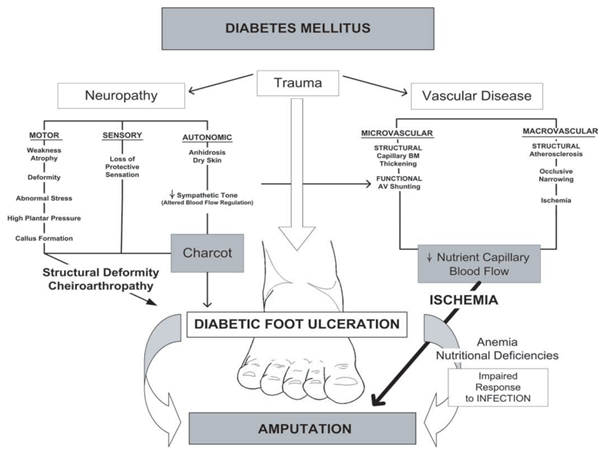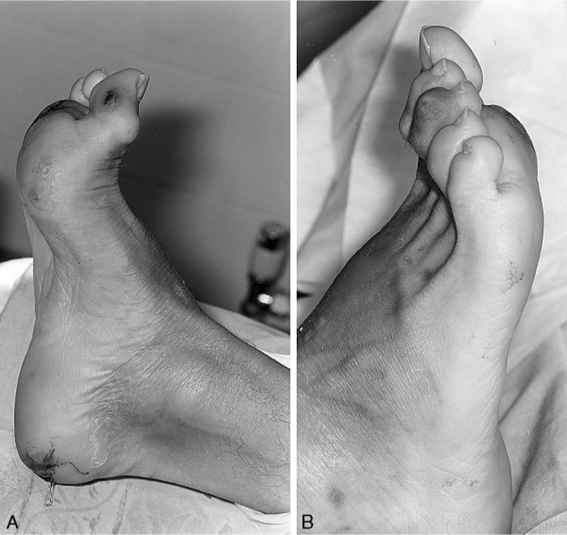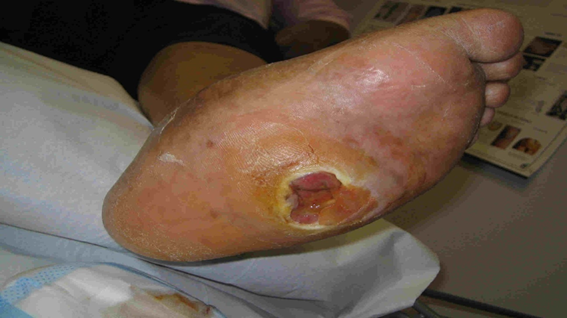Yew Toh Wong BMBS, MD, FRCS Gen, FRACS Vasc, FSCAI
Vascular and Endovascular Surgeon, Kings Park Vascular Clinic, 309 Goodwood Road, Kings Park SA 5034
Email: kingsparkclinic@internode.on.net
The incidence of diabetes is increasing in Australia. It is the fastest growing chronic disease in Australian Society. It is estimated that up to one million Australian have diabetes and another 700,00 people with undiagnosed diabetes. Diabetes is a chronic condition that affected most organs in the body. Vascular surgeon often is called upon to deal with complications of diabetes such as stroke, kidney disease, disease of the arteries and foot ulcer.
People with diabetes develop foot ulcer due to multiple reasons. Diabetes destroy the nerve of the foot, resulting in a lack of sensation in the foot, and allows build-up of callus in pressure areas of the foot. Neuropathy also causes lack of sweating in the foot leading to cracks in the sole of the foot. The cracks provide a portal of entry for germs to cause infection in the foot. Neuropathy also causes imbalance between the long and short muscles of the foot causing deformity in the toes and prominent ball of the foot. These deformities lead to ulceration. Diabetes also causes shortening of the Archilles tendon which further excaerbates the prominence of the ball of the foot. Neuropathy can over time causes fracture in bones in foot causing significant deformity of foot (Charcot’s Arthropathy). Testing for neuropathy can be carried out with a 10g nylon monofilament on different areas of the feet by your podiatrist, local doctor or vascular surgeon.
Beside neuropathy, diabetes also cause blockage of the arteries in the leg, especially in the calf, leading to poor blood supply to the foot, ulceration and gangrene. Wounds that develop do not heal without adequate blood supply and failure of foot wound to heal can lead to amputation. It is estimated that 15% of people with diabetes will develop a foot ulcer during their lifetime.
Optimal control of blood sugar level is crucial in people with diabetes to preventing complications from diabetes. HbA1C is a marker of longer term control of blood sugar level. The aim is to maintain an HbA1C of ≤ 7%or 53mmol/mol. This equates to an average blood sugar level of 8.5mmol/L. Each 1 per cent reduction in HbA1C, there is a relative risk reduction of 21 per cent for any diabetes-related complications, 21 per cent for diabetes-related deaths, 14 per cent for heart attack and 37 per cent for kidney, nerve, and eyes damage.
It is important that you look after your diabetes and feet to avoid development of ulcer. You should check your blood sugar level and feet on a daily basis and if you have difficulty, you should ask a friend or family member to help you. You should also seek the advice of your local general practitioner or podiatrist.

How diabetes cause foot ulcer

Prominent ball of foot, hammer toes deformity and cracked heel in diabetic foot

Figure: Charcot foot (fracture of foot bones) in diabetes causing ulceration